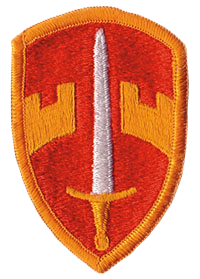In the darkness of Saturday night, 23 March 1968, a team of VC sappers kept edging closer and closer to the American perimeter. Their target, while physically small, had a tremendous capacity to send broadcasts. While aimed at the northern part of II Corps and I Corps, this station could be heard in North Vietnam. The 250-foot tall radio antenna stuck up like a giant aiming stake that oriented the camouflaged demolition men as they silently approached the outside defenses. The American radio station was a thorn in the Communists’ side because “Voice of the Army” broadcasted well into North Vietnam. The enemy was determined to silence it. At approximately 0215 hours, 24 March 1968, about twenty Communist sappers broke through the wire surrounding the radio station as a barrage of B-40 rockets hit the compound. The rockets awoke the sleeping American soldiers of the 7th PSYOP Detachment (Provisional). Occasional mortar and B-40 rocket harassment fire was common at night, but this was to be an extraordinary attack.4

The explosions prompted Captain Michael Jordan, Mobile Advisory Team 21, and First Lieutenant Michal Merkel, the 7th PSYOP Detachment commander, to put on flak jackets and grab their weapons. “Since there were so many rockets falling between the bunker and the sleeping huts, we determined that it would be best to remain where we were,” said Jordan.5 Suddenly a rocket slammed through the corrugated metal roof of the building and exploded, seriously wounding Merkel. Jordan, wounded in the left leg and face, administered first aid to Merkel in the darkened hut. Then, Jordan dragged Merkel outside to the nearest trench for protection. As Specialist Fourth Class Henry Baldys and Sergeant Jimmie Carroll made their way to the team bunker, they came across the wounded Captain Jordan. Helping him to the bunker, Sergeant Carroll was wounded in the back by AK-47 fire. Inside the bunker they encountered Specialist Fourth Class Norman Batino and Specialist Five Roy Inman. They had made it there only minutes after sappers had tossed a satchel charge inside. Luckily, the heavily sandbagged and log-reinforced bunker was not seriously damaged.6
Specialists Batino and Baldys realized that Merkel was missing. Looking outside they saw that the unit orderly room and supply room were on fire. The two men crept outside and covered one another for thirty yards as they moved under fire to the trench. They found Merkel lying in the trench unconscious. Batino helped Baldys get Merkel into a fireman’s carry. Then Baldys, covered by Batino, carried Merkel back to the bunker while the attack raged about them. Just as they got inside the team bunker, a tremendous explosion rocked the compound. Looking out through the dust and debris, the men saw that the radio antenna had been knocked down.7
The sappers had succeeded with their main target, but their mission was not complete. They began throwing satchel charges into the sandbagged radio modules that were the core of the transmitter system. While the PSYOPers defended themselves with small arms fire from their bunker, the ARVN unit responsible for perimeter security broke inside the compound to counterattack and hunt down the sappers. By 0330 AM, it was quiet—the VC had been dispersed. The Communists lost a half dozen sappers and the Americans had three wounded, one seriously.8
The cost of the VC attack cannot just be measured in damaged and destroyed equipment. The U.S. Army suffered three wounded. All the wounded were evacuated to the hospital at Pleiku Airbase. Merkel died of his extensive wounds shortly after arrival.




